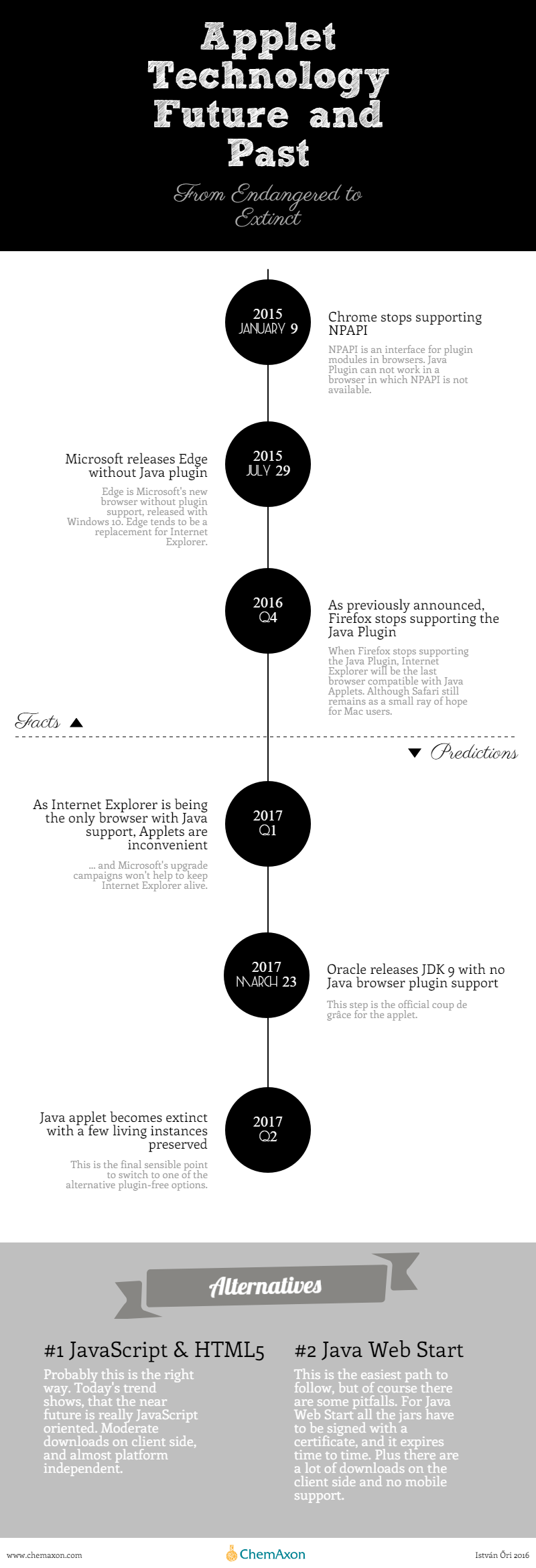Java Applet technology was a great tool to create nice and shiny applications that can be embedded into websites. It even had the ability to communicate with JavaScript through custom APIs. It was fun, people were happy. But time went by, web based technologies evolved and the browsers adopted the changes. The plugin technologies (Flash, Silverlight, Java, ActiveX, etc.) were pushed back by JavaScript, CSS, and HTML5. The security issues in plugin based technologies did not help either by opening backdoors for malware and flooding the users with alert windows.
The infographics below shows the near past and future of Java Applet technologies.

These are obviously just predictions, but sooner or later the Java Applet technology will be useless. As a Java programmer who developed and maintained Java Applets for years, I recommend to switch to JavaScript, CSS, and HTML based technologies as soon as possible on the web. How does all this affect ChemAxon? Well, Java Applet serves as the platform for Marvin Applet, the browser compatible version of our most popular desktop chemical sketching tool, the MarvinSketch. We started to develop
Marvin JS, the JavaScript based counterpart of
MarvinSketch, a few years ago. The web-based sketcher does not have all the features that an advanced desktop technology already has, but that was not our goal. We wanted to create a light-weight, fast and easy-to-use web application. For delicate and complex issues the desktop based MarvinSketch is still a better choice. We also created (and we are continuously improving) a cookbook to show some examples to ease the pain of migration from Marvin Applet to Marvin JS. We still welcome any feedback and suggestion on
our forum - and also in the comment field below this post.

Related content
26 11 2025
< 1 minute
Retiring Chemicalize Pro Services, Transitioning to Modern Solutions
Retiring Chemicalize Pro on December 31st, 2025, moving to more modern solutions.